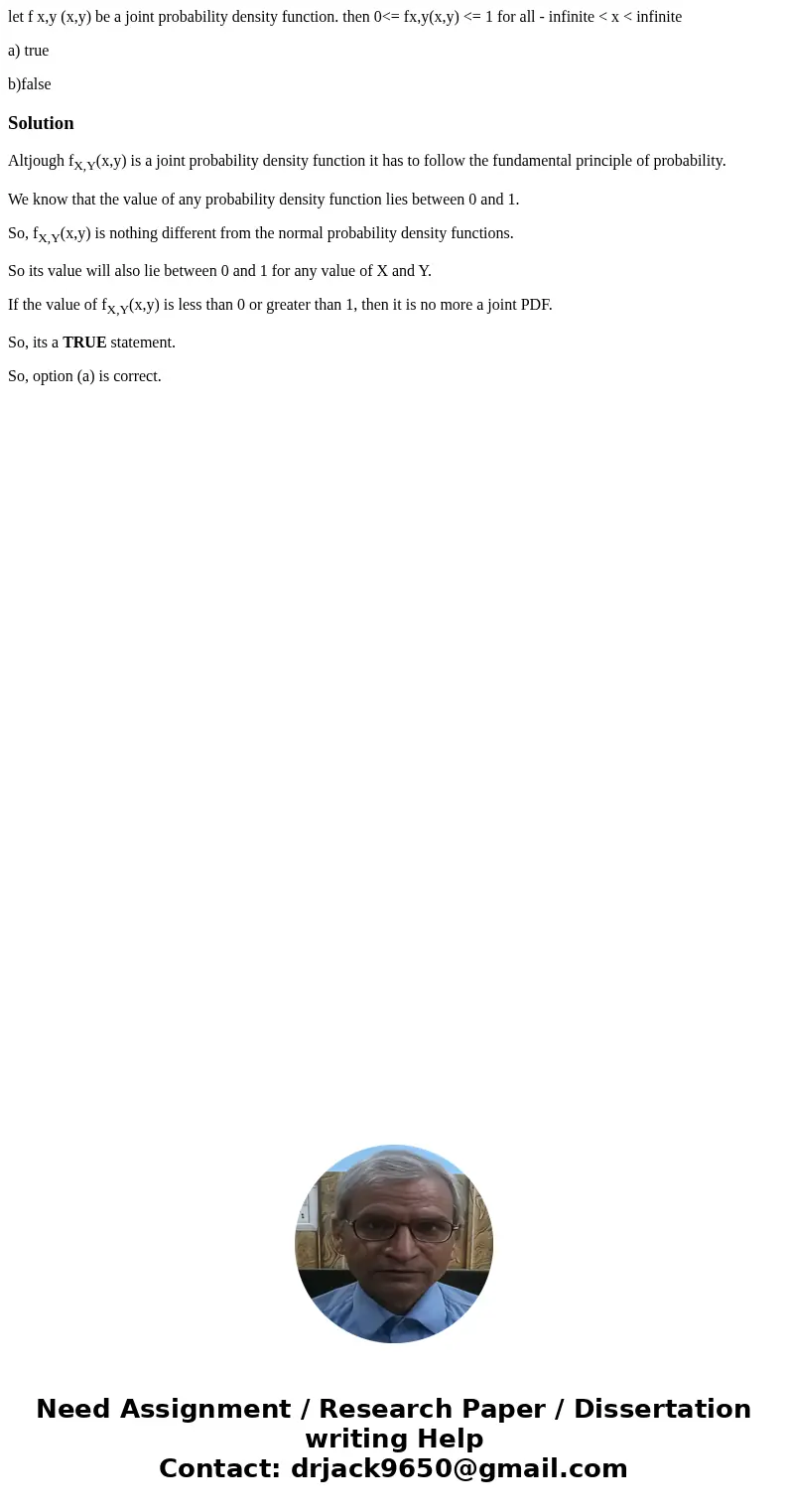let f xy xy be a joint probability density function then 0
let f x,y (x,y) be a joint probability density function. then 0<= fx,y(x,y) <= 1 for all - infinite < x < infinite
a) true
b)false
Solution
Altjough fX,Y(x,y) is a joint probability density function it has to follow the fundamental principle of probability.
We know that the value of any probability density function lies between 0 and 1.
So, fX,Y(x,y) is nothing different from the normal probability density functions.
So its value will also lie between 0 and 1 for any value of X and Y.
If the value of fX,Y(x,y) is less than 0 or greater than 1, then it is no more a joint PDF.
So, its a TRUE statement.
So, option (a) is correct.

 Homework Sourse
Homework Sourse